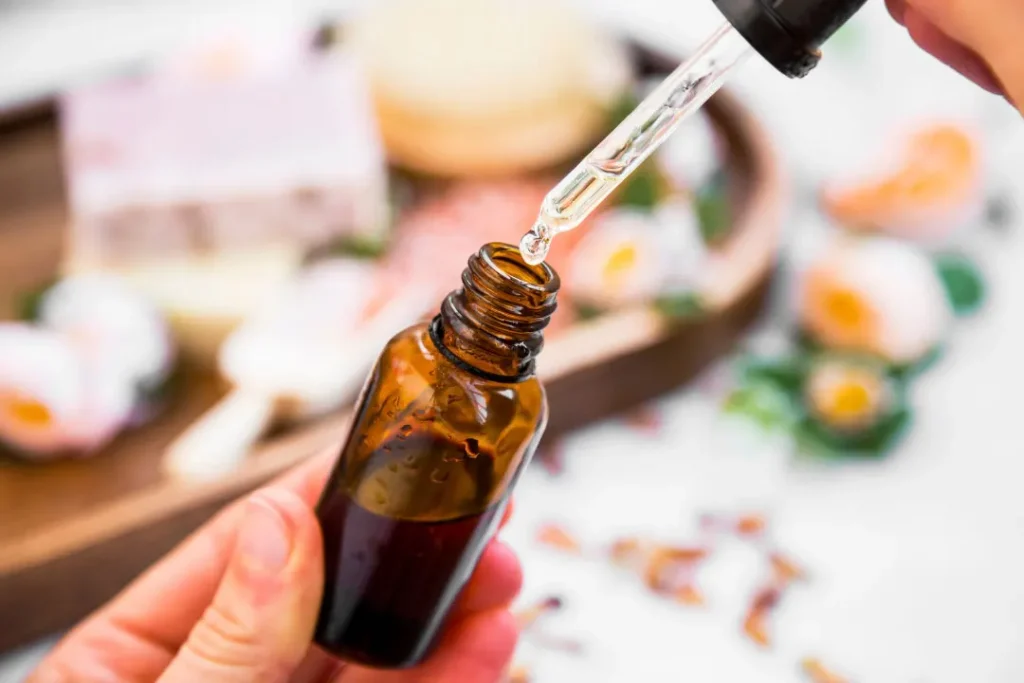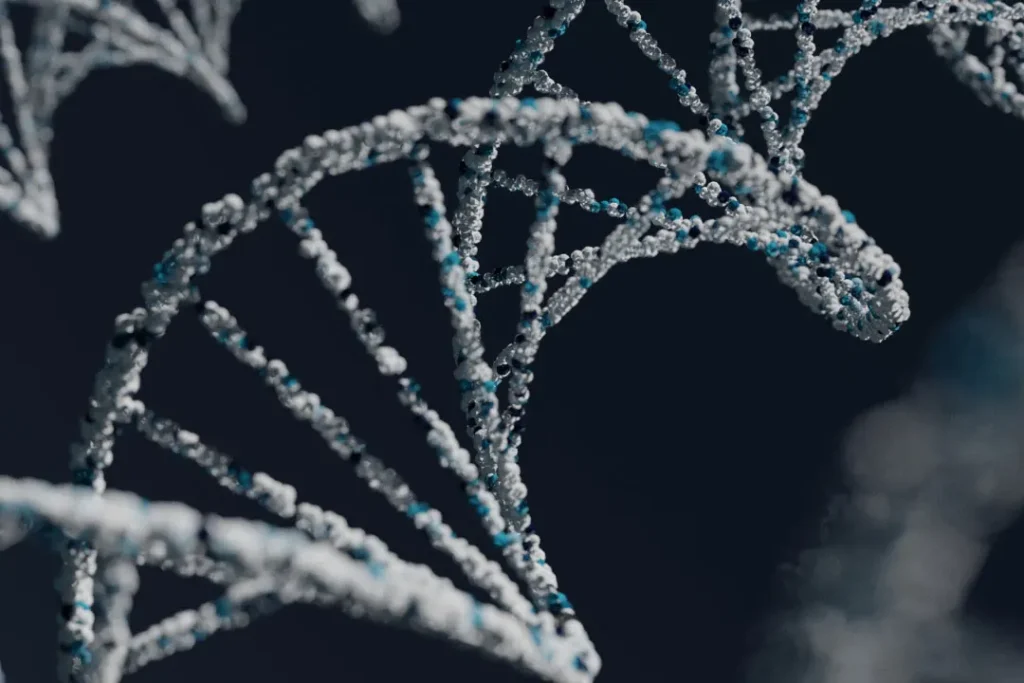Colloidal silver is an aqueous dispersion of minute silver particles that is frequently sold as a dietary supplement. Regardless of the disputed nature of its therapeutic claims, it is critical to investigate the scientific grounds of these effects in order to gain a thorough understanding of this supplement.
You May Also Like:
Finding The Best Alpha GPC Supplement
Acacia Rigidula: Benefits, Dosage, Side Effects, Drug Interactions, and Other Important Information
Nature of Colloidal Silver
Colloidal silver is a colloid, as the name implies. This is a heterogeneous mixture in which one substance (in this example, silver) is consistently scattered throughout another substance (usually a liquid, such as water). Because the silver particles are typically fewer than 100 nanometers in diameter, they can remain floating in the liquid without settling. When these particles are suspended in water, they cause the Tyndall effect, which is the scattering of light by particles in a colloid.
Silver (Ag) as an element is a transition metal with high electrical and thermal conductivity. It has the atomic number 47 and is well recognized for its glossy appearance and antibacterial qualities.

Health Benefits of Colloidal Silver
Silver has been used for ages for its antibacterial capabilities, from preserving water and milk to curing wounds. The introduction of antibiotics in the twentieth century reduced its use, but interest in silver, notably colloidal silver, is currently experiencing a resurgence in popularity for alot of people due to its antibiotic qualities.
The antibacterial activity of silver ions (Ag+) is well established. They disturb the metabolic activities of bacteria, causing cell walls and DNA to be disrupted and ultimately leading to cell death. In fact, silver ions are so effective that they are used in medical dressings and medical device coatings. It is important to highlight, however, that these actions occur at the micro-level, and extrapolating these effects to systemic use in people remains a disputed field of research.
Emerging research suggests that colloidal silver can be beneficial in the treatment of sinusitis, cold and flu symptoms, and skin disorders such as eczema and psoriasis. However, these findings must be supported by larger, high-quality clinical trials.


The Chemistry of Colloidal Silver
Silver nanoparticles distributed in a liquid medium make up the colloidal silver suspension. The chemistry at work here is largely concerned with the properties of these silver nanoparticles, their reactivity, and interactions with other biological entities.
Silver nanoparticles have a high surface-area-to-volume ratio, which increases their chemical reactivity substantially. They are also known to produce silver ions (Ag+), which are powerful antibacterial agents. These ions can develop as a result of the oxidative dissolution of silver nanoparticles, which can be induced by the presence of oxidants or by interaction with physiologically relevant molecules. Particle size, surface coating, and the chemical environment can all impact the dissolution process.
Active Physiological Mechanisms of Colloidal Silver
Once in the body, colloidal silver works primarily through the antibacterial activity of silver ions (Ag+). These ions have a strong affinity for sulfur and nitrogen molecules, both of which are prevalent in the cellular components of many pathogenic organisms.
Silver ions interact principally with three biological components: the cell wall/membrane, proteins, and DNA. Silver ions can induce structural damage to the bacterial cell wall or membrane, resulting in increased permeability and, finally, cell death.
Silver ions can bind to sulfur-containing proteins inside the cell, causing denaturation and loss of function. Critical proteins impacted include those involved in respiration and energy synthesis, potentially jeopardizing cellular metabolism.
Furthermore, silver ions can bind with bacterial DNA, preventing it from replicating. This not only prevents the bacteria from multiplying, but it can also result in genetic alterations that are harmful to the organism.
Although harmful organisms have been the primary focus of colloidal silver, it is important to note that your body also include cells with similar components that can interact with silver ions. This is especially important in cases of excessive colloidal silver use, which can result in systemic silver buildup and harmful effects.
Despite significant in vitro and in vivo studies, the specific molecular mechanisms behind colloidal silver’s antibacterial action, particularly its effects on human cells, remain an active topic of research. This emphasizes the importance of comprehensive scientific research before colloidal silver may be recommended for general usage in healthcare.
While colloidal silver has antibacterial potential, the lack of strong scientific consensus on its systemic usage and associated negative effects dictates caution. Furthermore, extensive research is required to identify its physiological mechanisms and long-term impacts.


Optimal Dosage of Colloidal Silver
The dosage of colloidal silver varies depending on the product, as concentration might vary. It is critical to follow the manufacturer’s guidelines. There is no set daily recommended intake for colloidal silver, owing to a lack of data supporting its systemic application.
Side Effects of Colloidal Silver
Excessive colloidal silver consumption can result in argyria, a permanent bluish-grey staining of the skin and mucous membranes caused by silver deposits. Other potential side effects include neurological issues, kidney damage, and gastrointestinal pain.
Excessive consumption of silver is can potentially have its drawbacks, which is why you should introduce colloidal silver as a supplement in your diet with abundant caution.


Potential Substance Interactions with Colloidal Silver
Silver, like other metals, can interact with certain compounds. Its most notable interaction is with sulfur, where it forms silver sulfide, which can cause skin blackening. Furthermore, colloidal silver may interfere with the absorption of some medicines, such as antibiotics and the thyroid hormone thyroxine.
Responsible Use and Best Practices for Colloidal Silver
Given the lack of strong scientific evidence supporting systemic use of colloidal silver, as well as the potential negative effects, it should be used with caution. If you have an underlying health concern or known condition, your best course of action will be to consult with your healthcare practitioner before you begin taking colloidal silver.
Colloidal Silver: Conclusion
Colloidal silver has the potential to remedy numerous ailments and deficiencies in people. Most notably for it’s potency to combat sinus infections and sinusitis, colloidal silver tonics are favorable for people with nasal sensitivities and congestion issues.
If you yourself are struggling with nasal complications, consider trying controlled doses of colloidal silver sprays as a means of offering relief for your symptoms.
Like with all supplements, however, you should always communicate with your doctor and gauge the pros and cons of any foreign additive into your body. The last thing you want is to remedy one issue and create a new one in the process.
References:
- “My dad takes colloidal silver for his health, but is it safe?”. Retrieved from: https://www.mayoclinic.org/healthy-lifestyle/consumer-health/expert-answers/colloidal-silver/faq-20058061
- “Silver Nanoparticles as Potential Antiviral Agents.” Retrieved from: https://www.ncbi.nlm.nih.gov/pmc/articles/PMC6264685/
- “How Colloidal Silver Spray Can Help Heal Your Sinus Issues.” Retrieve from: https://www.renewedvitalitymd.com/how-colloidal-silver-spray-can-help-heal-your-sinus-issues/
Important Note: The information contained in this article is for general informational purposes only, and should not be construed as health or medical advice, nor is it intended to diagnose, prevent, treat, or cure any disease or health condition. Before embarking on any diet, fitness regimen, or program of nutritional supplementation, it is advisable to consult your healthcare professional in order to determine its safety and probable efficacy in terms of your individual state of health.
Regarding Nutritional Supplements Or Other Non-Prescription Health Products: If any nutritional supplements or other non-prescription health products are mentioned in the foregoing article, any claims or statements made about them have not been evaluated by the U.S. Food and Drug Administration, and such nutritional supplements or other health products are not intended to diagnose, treat, cure, or prevent any disease.
